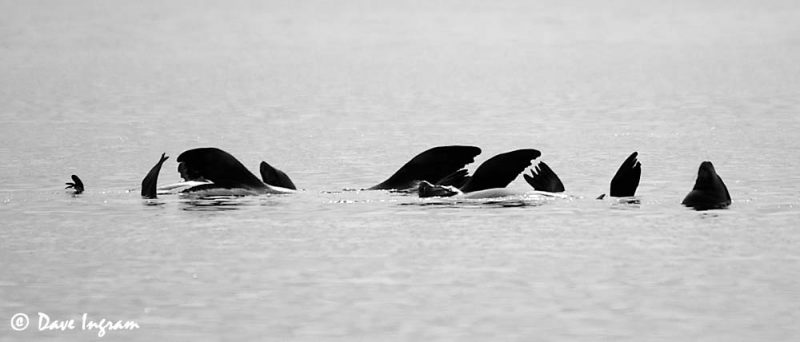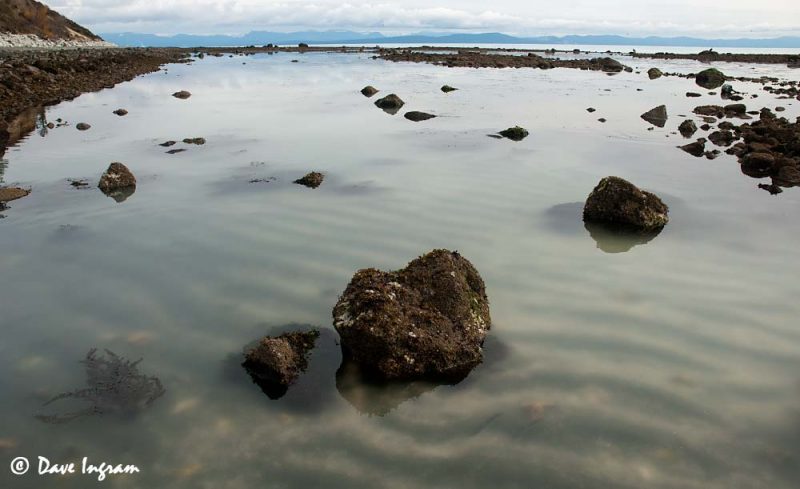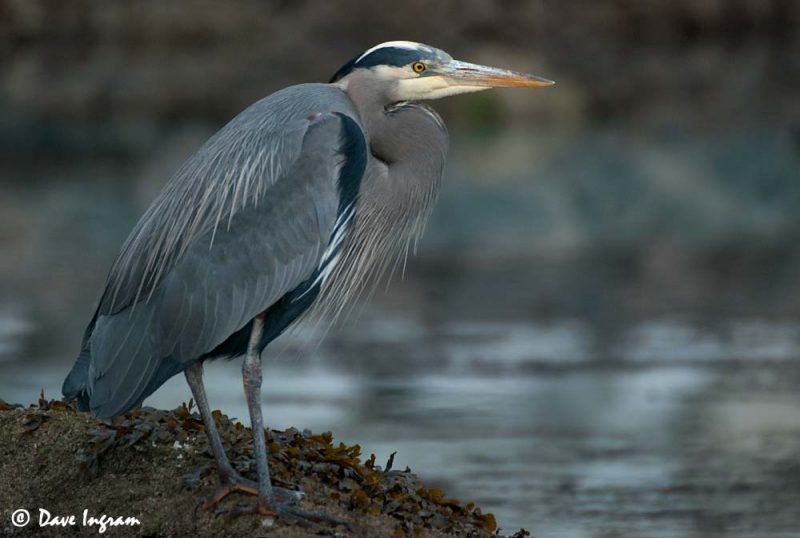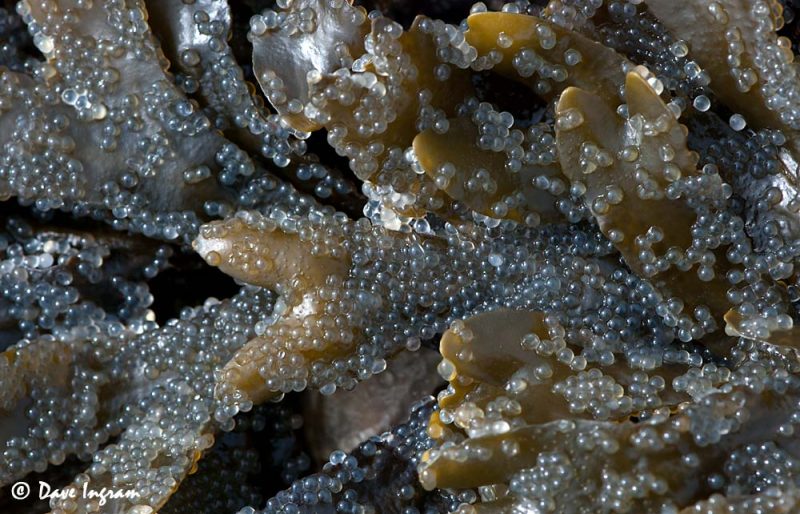I always love getting down to the edge of the sea and at this time of the year there is even more incentive to wade into the tidal pools and poke around. In late February and early March it pays to watch for flocks of very active gulls and groups of barking and feeding sea lions. Both of these are signs that large schools of Pacific Herring (Clupea pallasi) have made their way to the shallow near-shore to spawn. A more striking visual indicator is the dramatic milky green colour of the water itself. The colour is especially pronounced on a sunny day and a result of all of that herring milt (sperm) in the water.

The sea lions were definitely present at Goose Spit in Comox, British Columbia on Wednesday afternoon when I pulled into the parking lot. I initially had thought of walking along the spit and doing some birding in the grassy area at the tip but decided to walk towards the bluffs and the rocky shoreline to the east and north. There seemed to be more bird activity in that direction and the tide was a fair way out so there was cobble that I could explore. If I couldn’t find any herring, at least I’d be able to look for interesting creatures under the rocks.

About 15 minutes from the parking area at the base of the bluff was a large shallow tide pool, nearly opaque with milky herring milt. I waded into the water slowly and tried to capture the surreal landscape and water colour. It was then I noticed that there were at least a dozen herring swimming around my feet, giving me a very close look at these fascinating fish.

I moved further out into the pool and then out onto the rocks closer to a group of bald eagles sitting on larger boulders at the edge of the water. A great blue heron sailed gracefully along the shore and found a perch in the middle of the pool to survey for fish.

At first I thought that there were only a few fish in the water until I noticed the silver splashing and flipping on the far side of the pool. At the outlet of the tidal pool, scores of herring struggled in the water and the seaweed thick with eggs. Half eaten fish lay on the rocks: with this many fish, the diners could afford to be choosy.
I sat on a nearby rock and watched the fish for a while. I was surprised that there were so many whole fish given the numbers of gulls and eagles on the beach, but perhaps that was because there was so much fish. The constant barking of sea lions and cries of raucous gulls were a perfect seaside serenade.

I kept my eyes open for more roe on the way back to the parking area and found a patch of fucus that was thick with eggs. Curious, I scraped a few off of the seaweed with my fingernail and placed the perfect little spheres on my tongue. They were pleasantly salty and quite firm – it was easy to understand why First Nation’s people ate them and why the herring fishery is so important today.
As I walked the beach, I kept thinking of how complex the marine food web is and the myriad interactions between the fish and the birds, mammals and other smaller organisms that feed on the eggs and spawned out herring. It is wonderful that such a small fish can play such a key role.
Read more about Pacific Herring:
- Capital Regional District: Pacific Herring
- The Pacific Wildlife Foundation
- Raincoast Conservation Foundation: Pacific Herring – Underpinning the Coastal Foodweb
Getting There:
Use the Google Map below to get to Goose Spit.
Comox, BC